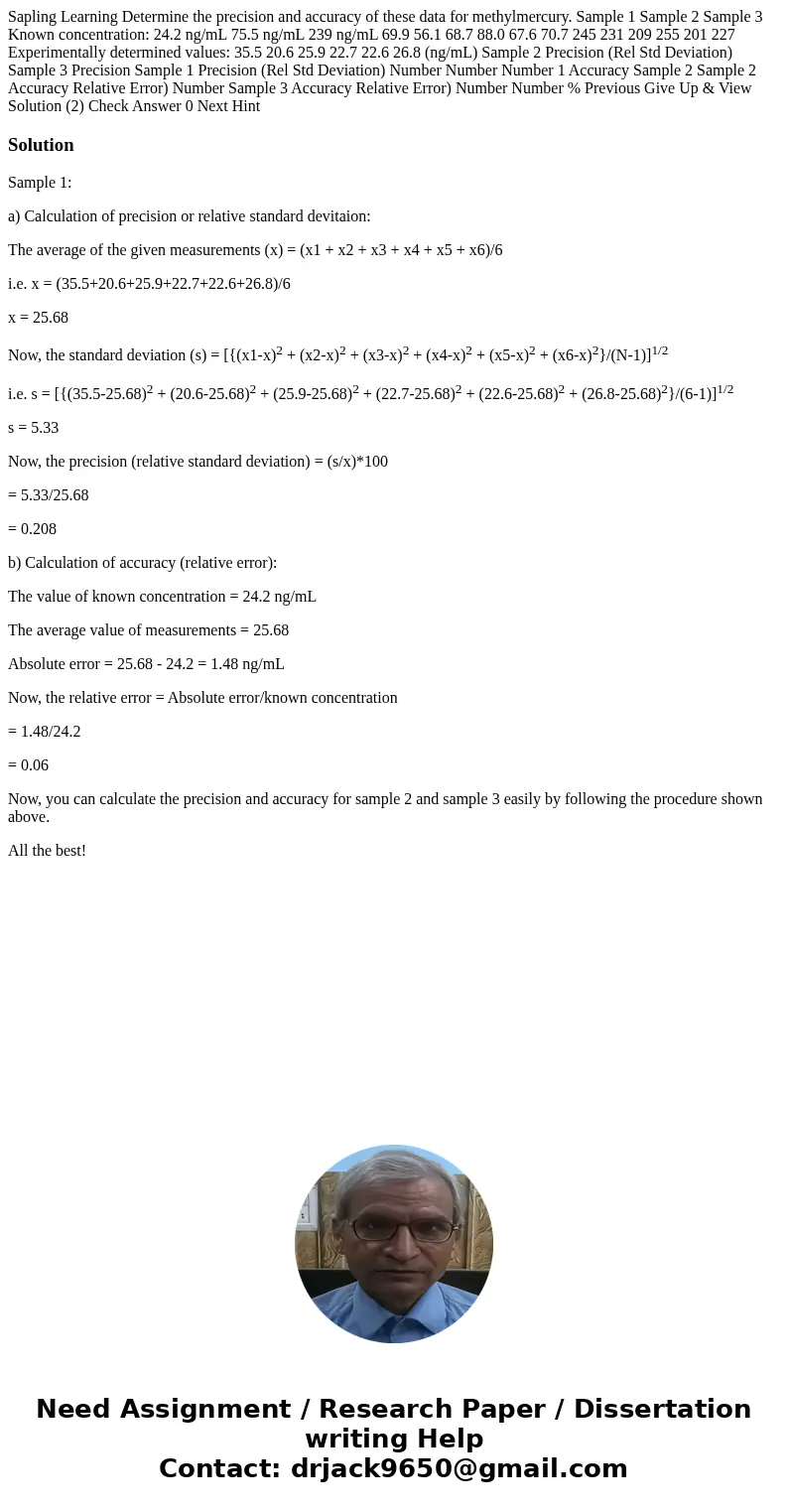Sapling Learning Determine the precision and accuracy of the
Solution
Sample 1:
a) Calculation of precision or relative standard devitaion:
The average of the given measurements (x) = (x1 + x2 + x3 + x4 + x5 + x6)/6
i.e. x = (35.5+20.6+25.9+22.7+22.6+26.8)/6
x = 25.68
Now, the standard deviation (s) = [{(x1-x)2 + (x2-x)2 + (x3-x)2 + (x4-x)2 + (x5-x)2 + (x6-x)2}/(N-1)]1/2
i.e. s = [{(35.5-25.68)2 + (20.6-25.68)2 + (25.9-25.68)2 + (22.7-25.68)2 + (22.6-25.68)2 + (26.8-25.68)2}/(6-1)]1/2
s = 5.33
Now, the precision (relative standard deviation) = (s/x)*100
= 5.33/25.68
= 0.208
b) Calculation of accuracy (relative error):
The value of known concentration = 24.2 ng/mL
The average value of measurements = 25.68
Absolute error = 25.68 - 24.2 = 1.48 ng/mL
Now, the relative error = Absolute error/known concentration
= 1.48/24.2
= 0.06
Now, you can calculate the precision and accuracy for sample 2 and sample 3 easily by following the procedure shown above.
All the best!

 Homework Sourse
Homework Sourse